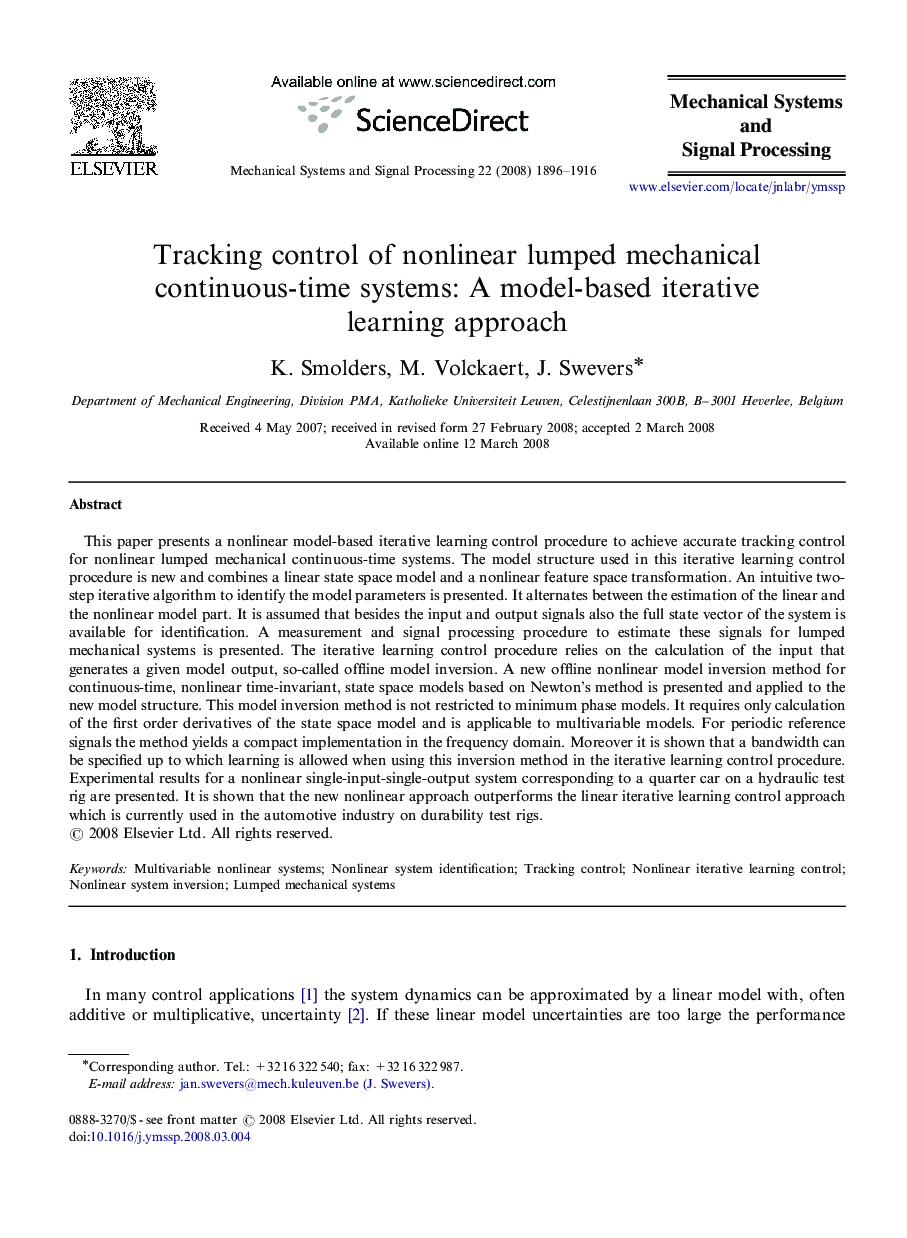| Article ID | Journal | Published Year | Pages | File Type |
|---|---|---|---|---|
| 560825 | Mechanical Systems and Signal Processing | 2008 | 21 Pages |
This paper presents a nonlinear model-based iterative learning control procedure to achieve accurate tracking control for nonlinear lumped mechanical continuous-time systems. The model structure used in this iterative learning control procedure is new and combines a linear state space model and a nonlinear feature space transformation. An intuitive two-step iterative algorithm to identify the model parameters is presented. It alternates between the estimation of the linear and the nonlinear model part. It is assumed that besides the input and output signals also the full state vector of the system is available for identification. A measurement and signal processing procedure to estimate these signals for lumped mechanical systems is presented. The iterative learning control procedure relies on the calculation of the input that generates a given model output, so-called offline model inversion. A new offline nonlinear model inversion method for continuous-time, nonlinear time-invariant, state space models based on Newton's method is presented and applied to the new model structure. This model inversion method is not restricted to minimum phase models. It requires only calculation of the first order derivatives of the state space model and is applicable to multivariable models. For periodic reference signals the method yields a compact implementation in the frequency domain. Moreover it is shown that a bandwidth can be specified up to which learning is allowed when using this inversion method in the iterative learning control procedure. Experimental results for a nonlinear single-input-single-output system corresponding to a quarter car on a hydraulic test rig are presented. It is shown that the new nonlinear approach outperforms the linear iterative learning control approach which is currently used in the automotive industry on durability test rigs.
